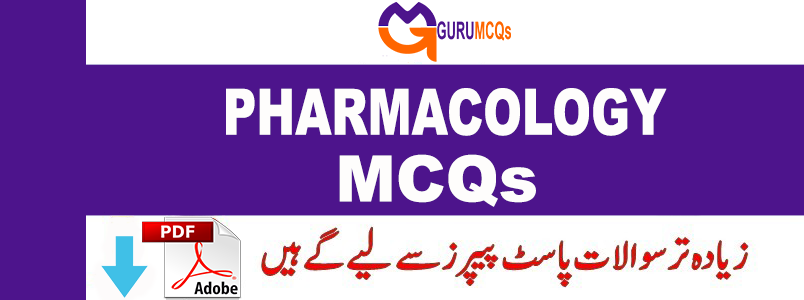
Pharmacology explores the interactions between drugs and biological systems, as well as the body’s responses to these drugs. This discipline covers a wide range of topics, including the origins, chemical properties, biological effects, and therapeutic uses of drugs. The impact of drugs can range from therapeutic benefits to potential toxicity, and is influenced by various factors. GuruMCQs.com provides an extensive array of pharmacology MCQs, continuously updated to encompass a wide range of topics. These MCQs span various areas such as neuropharmacology, psychopharmacology, toxicology, clinical pharmacology, molecular and cellular pharmacology, and more. Curated from reputable pharmacology references, these MCQs serve as valuable resources for interviews, entrance exams, competitive assessments, and certifications, catering to individuals at all stages of their careers. Additionally, explore MCQson Dental Materials for further study.
191. 1st past metabolism effect can be observed with which route______________?
A. Oral
B. Inhalation
C. Rectal
D. Parental
192. Patients tend to exhibit a greater than normal response drugs in each of the following conditions except_______________?
A. Congestive cardiac failure
B. Hepartic cirrhossis
C. Hyperthyroidism
D. Hypolbuminaemia
193. General anaesthetic most likely to cause bronchodilation is_____________?
A. Thiopentone
B. Ketamine
C. Propofol
D. Fentanyl
194. Centrineuraxial (spinaland epidural) anaesthesia is not contraindicated in____________?
A. Platalets <80,000
B. Patient on aspirin
C. Patient on oral anticoagulants
D. Raised intracranial pressure
195. After I.V administration of which of the following anesthetic agent, there is rapid recovery and less headedness ?
A. Propofol
B. Diazepam
C. Droperidol
D. Midazolam
196. In which of the following stage general anesthesia surgery is done_______________?
A. Stage I
B. Stage II
C. Stage III plane 2
D. Stage III plane 3
197. Which of the following inhalational agents is the induction agent of choice in children______________?
A. Methoxyflurane
B. Sevoflurane
C. Desflurane
D. Isoflurane
198. Hallucinations are seen after ________ anesthesia?
A. Ketamine
B. Thiopentone
C. Tentanyl
D. Nitrous oxide
199. Naturally occurring local anaesthetic________________?
A. Cocaine
B. Procaine
C. Lignocaine
D. None of the above
200. All of the following are vasodilators except______________?
A. Cocaine
B. Etomidate
C. Cyclopropane
D. Procaine
